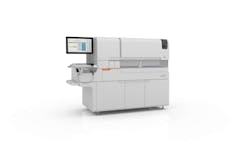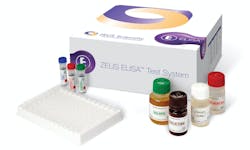Next generation immunoassay analyzer
The DxI 9000 Access Immunoassay Analyzer addresses today’s demand for operational lab performance through features like ZeroDaily Maintenance to save time, PrecisionVision Technology to safeguard against flawed data reports, and IntelliServe to maximize uptime. The platform has also shown capabilities to support development of increasingly sensitive and clinically relevant assays.
Serological controls for COVID-19 antibody testing
VIROTROL SARS-CoV-2 and VIROCLEAR SARS-CoV-2 are Bio-Rad’s new quality controls for use in SARS-CoV-2 antibody testing, the virus associated with COVID-19 disease. These products are available for IVD use in the USA and are CE Marked for the European market.
Flexible automation for efficient diagnostic testing
The Sprinter XL by EUROIMMUN (part of Revvity) processes samples for immunofluorescence testing and completes ELISA testing. It offers versatile configurations, user-friendly software, traceability of samples and slides, and includes the middleware needed to communicate results with laboratory information systems.
Rapid immunoassay for detection of H. pylori
Status H. Pylori:
· Cat. No. 37030
· 30 tests
· For the Qualitative Detection of Anti-Helicobacter pylori Antibody in Human Whole Blood, Serum or Plasma
· CLIA WAIVED for whole blood
· Fingerstick whole blood convenience
· Single-reagent procedure
· Results available in 10 minutes
· Sensitivity of 95.9% with 91.6% overall agreement to biopsy histology
Compact testing system tackles lab challenges
Labs operating at low- to mid-testing volumes will benefit from advantages that the Atellica CI Analyzer offers, including improved turnaround time predictability, advanced reporting functionality, and focused safety and security measures. Measuring 1.9 m2, the Atellica CI Analyzer offers differentiating capabilities to leverage downtime and increase lab efficiency and profitability.
Early Lyme disease detection
The all-ELISA ZEUS Borrelia Modified Two-Tiered Testing (MTTT) algorithm improves detection of early Lyme disease by up to 30% compared to the Standard Two-Tiered Testing (STTT) algorithm. The STTT algorithm requires a 2nd tier immunoblot, which adds subjectivity and reduces sensitivity in detecting acute Lyme disease.






